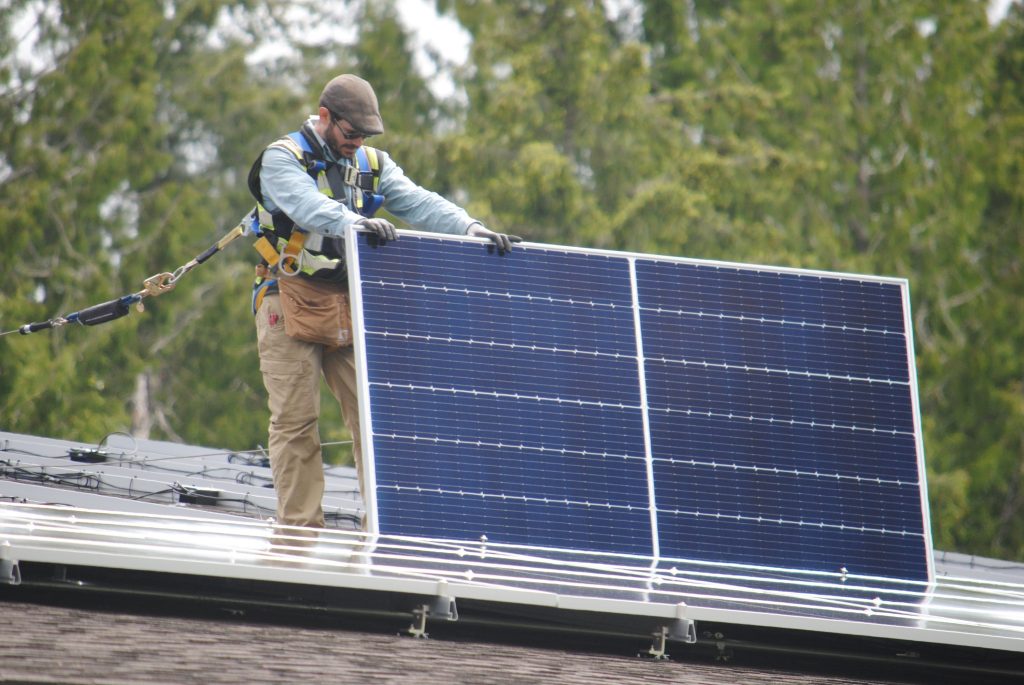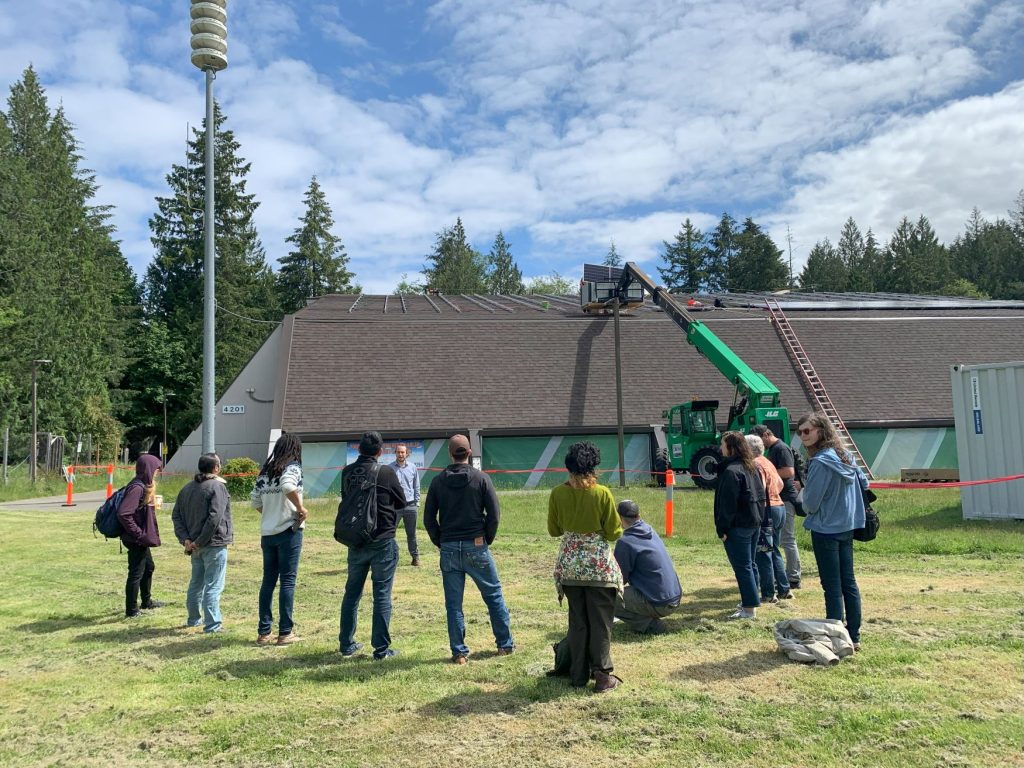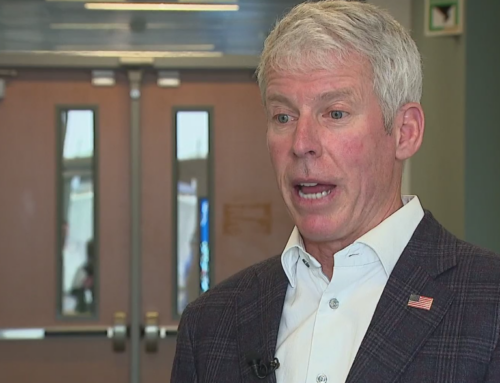The Evergreen State College Students Lead University’s Largest Solar Expansion on Olympia
April 3, 2025
A solar-powered campus is a long-held vision of The Evergreen State College. Students have guided clean energy projects at the college for two decades, and the recent ribbon-cutting ceremony for a new rooftop solar panel array means the college’s latest student-driven solar effort is now an energy-producing reality.
The exciting solar photovoltaic project is the largest of its kind in the college’s history. Installed on the roof of the Olympia campus’s Covered Recreation Pavilion, affectionately nicknamed the Thunderdome, the solar panels will generate significant financial and energy savings for the college. Students drove the project from beginning to end, learning about clean energy and project implementation along the way.
“This is a great resource in the college community,” says Evergreen’s Center for Climate Action and Sustainability Assistant Director Michael Joseph.

Photovoltaic solar panels use solar cells to convert energy from the sun into electricity. A solar array is a collection of multiple panels. The new solar array contains 196 Q-Cell Peak Duo 480-watt solar panels for a total size of 94 kilowatts. It will be capable of producing approximately 99,300 kilowatt-hours of renewable electricity for the college each year.
Olympia Community Solar Executive Director, Mason Rolph, is an Evergreen alum whose nonprofit organization provided support and technical assistance. Rolph says the electricity from the college’s pavilion solar project will save about $13,000 in yearly energy costs, and over the estimated 25-year project lifespan the college will save at least $440,000 in energy expenses. “Per dollar, what you can get for solar is extraordinary,” says Rolph. These savings will free up college resources for additional student support and services.
This project came to life because of the student-led Clean Energy Committee’s financial support. The committee manages income from the Clean Energy Fund, which is a voluntary fee that students created to support clean energy projects on campus and offset electricity used by Evergreen through renewable energy credits. The remaining funds are allocated to student, staff, and faculty projects geared towards reducing the campus carbon footprint. The committee awarded approximately $264,000 to finance the pavilion solar panels, college staff time to steward the project to completion, and educational programing.
At the October 29, 2024 ribbon-cutting, Evergreen President John Carmichael joined with Olympia Community Solar, solar installers MAD Energy NW, students, faculty, staff, and the community to celebrate. Carmichael thanked the students for establishing their Clean Energy Fund 20 years ago. “It covers 100% of the project we are initiating today,” Carmichael explained. In addition, this solar project will reduce the college’s carbon footprint by 88 thousand pounds of carbon dioxide (CO2) emissions, equivalent to planting 723 trees every year, or not driving 111,000 miles.

Evergreen students originally conceived the pavilion solar project in 2016, when undergraduates Matthew Strickland and Matt Booth furthered a faculty question to assess and design a solar array installation. However, the timing was not quite right for the project, and they instead moved forward with a different solar project on the Tacoma campus.
The original project resurfaced in 2023, when a workgroup including Master of Environmental Studies students Emma Wright and Keira Jensen unearthed the original plans in collaboration with staff from the Climate Center and Office of Sustainability. The stars aligned this time, aided by a new roof on the pavilion that provided excellent solar exposure. “This project was able to move so fast because past students did all the baseline work that students [today] could work off of,” says Olympia Community Solar Outreach Director Lana Rae Jarvis.
Joseph adds that students not only revived and funded the pavilion solar project, but also obtained real-life experience in moving the effort forward. For example, the process provided professional work life benefits by teaching students how to write, present and weigh proposals submitted to the Clean Energy Committee. “Upon graduating, they can say, ‘I know how to do this,’” Joseph explains. “It’s kind of an awesome thing.”
Wright agrees, saying that students will carry the experience gained from their involvement in the solar project’s design process into their professional lives. “It was amazing to get to see this project through from beginning to end,” says Wright, who helped secure funding for the pavilion project as a student and then witnessed its construction and installation in a post-graduation summer internship with the college.

Evergreen students have previously invested in clean energy through existing solar installations on the Daniel J. Evans Library and modular housing in Olympia, and on the Tacoma campus. Students have also funded renewable energy efforts like electric vehicles, the student-run Biodiesel Project, and the Bike Share Program. Visit The Evergreen State College website.
The Evergreen State College
2700 Evergreen Parkway NW
360.867.6000
Sponsored
Search
RECENT PRESS RELEASES
Related Post





